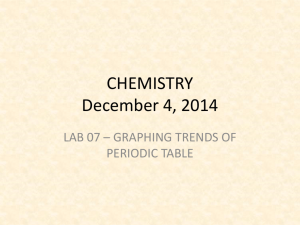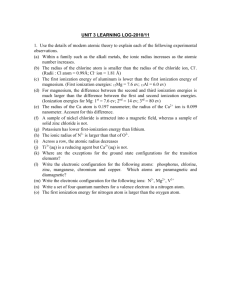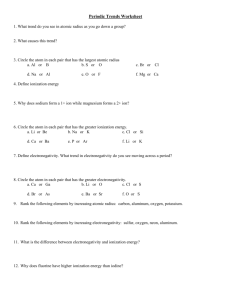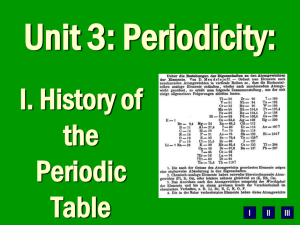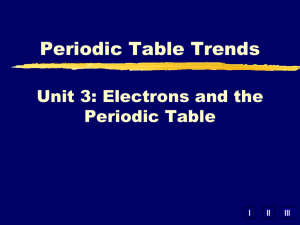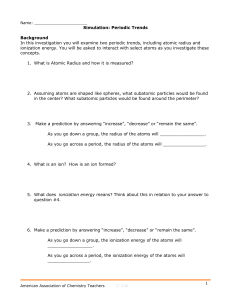Ch1-8 Brown and LeMay Review
advertisement
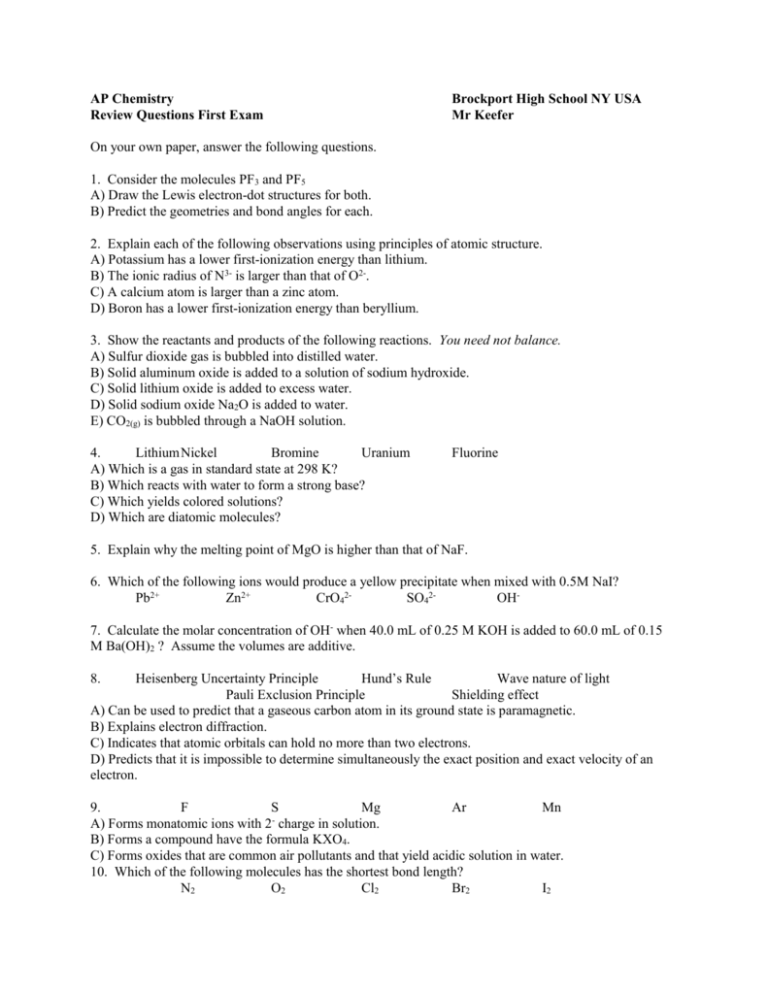
AP Chemistry Review Questions First Exam Brockport High School NY USA Mr Keefer On your own paper, answer the following questions. 1. Consider the molecules PF3 and PF5 A) Draw the Lewis electron-dot structures for both. B) Predict the geometries and bond angles for each. 2. Explain each of the following observations using principles of atomic structure. A) Potassium has a lower first-ionization energy than lithium. B) The ionic radius of N3- is larger than that of O2-. C) A calcium atom is larger than a zinc atom. D) Boron has a lower first-ionization energy than beryllium. 3. Show the reactants and products of the following reactions. You need not balance. A) Sulfur dioxide gas is bubbled into distilled water. B) Solid aluminum oxide is added to a solution of sodium hydroxide. C) Solid lithium oxide is added to excess water. D) Solid sodium oxide Na2O is added to water. E) CO2(g) is bubbled through a NaOH solution. 4. Lithium Nickel Bromine Uranium A) Which is a gas in standard state at 298 K? B) Which reacts with water to form a strong base? C) Which yields colored solutions? D) Which are diatomic molecules? Fluorine 5. Explain why the melting point of MgO is higher than that of NaF. 6. Which of the following ions would produce a yellow precipitate when mixed with 0.5M NaI? Pb2+ Zn2+ CrO42SO42OH7. Calculate the molar concentration of OH- when 40.0 mL of 0.25 M KOH is added to 60.0 mL of 0.15 M Ba(OH)2 ? Assume the volumes are additive. Heisenberg Uncertainty Principle Hund’s Rule Wave nature of light Pauli Exclusion Principle Shielding effect A) Can be used to predict that a gaseous carbon atom in its ground state is paramagnetic. B) Explains electron diffraction. C) Indicates that atomic orbitals can hold no more than two electrons. D) Predicts that it is impossible to determine simultaneously the exact position and exact velocity of an electron. 8. 9. F S Mg Ar Mn A) Forms monatomic ions with 2 charge in solution. B) Forms a compound have the formula KXO4. C) Forms oxides that are common air pollutants and that yield acidic solution in water. 10. Which of the following molecules has the shortest bond length? N2 O2 Cl2 Br2 I2 11. Which group of elements have most nearly the same atomic radius? Be, B, C, N Ne, Ar, Kr, Xe Mg, Ca, Sr, Ba C, P, Se, I Cr, Mn, Fe, Co 12. Write the ground state electron configuration for the Mn3+ ion (Z = 25). 13. Which of the following are paramagnetic? Ca As Zn V Co 14. One of the outermost electrons in a strontium atom in the ground state can be described by which of the following sets of four quantum numbers? 5,2,0,½ 5,1,1,½ 5,1,0,½ 5,0,1,½ 5,0,0,½ 15. What is the simplest formula for an oxide of nitrogen that is 36.8% nitrogen by weight? 16. When a hydrate of Na2CO3 is heated until all the water is removed, it loses 54.3% of its mass. What is the formula of the hydrate? 17. Explain the following based on modern atomic theory. A) Within a family such as the alkali metals, the ionic radius increases as the atomic number increases. B) The radius of the chlorine atom (0.99Å) is smaller than the radius of the chloride ion, Cl- (1.81Å). C) The first ionization energy of aluminum is lower than the first ionization energy of magnesium. D) For magnesium, the difference between the second and third ionization energies is much larger than the difference between the first and second ionization energies.
